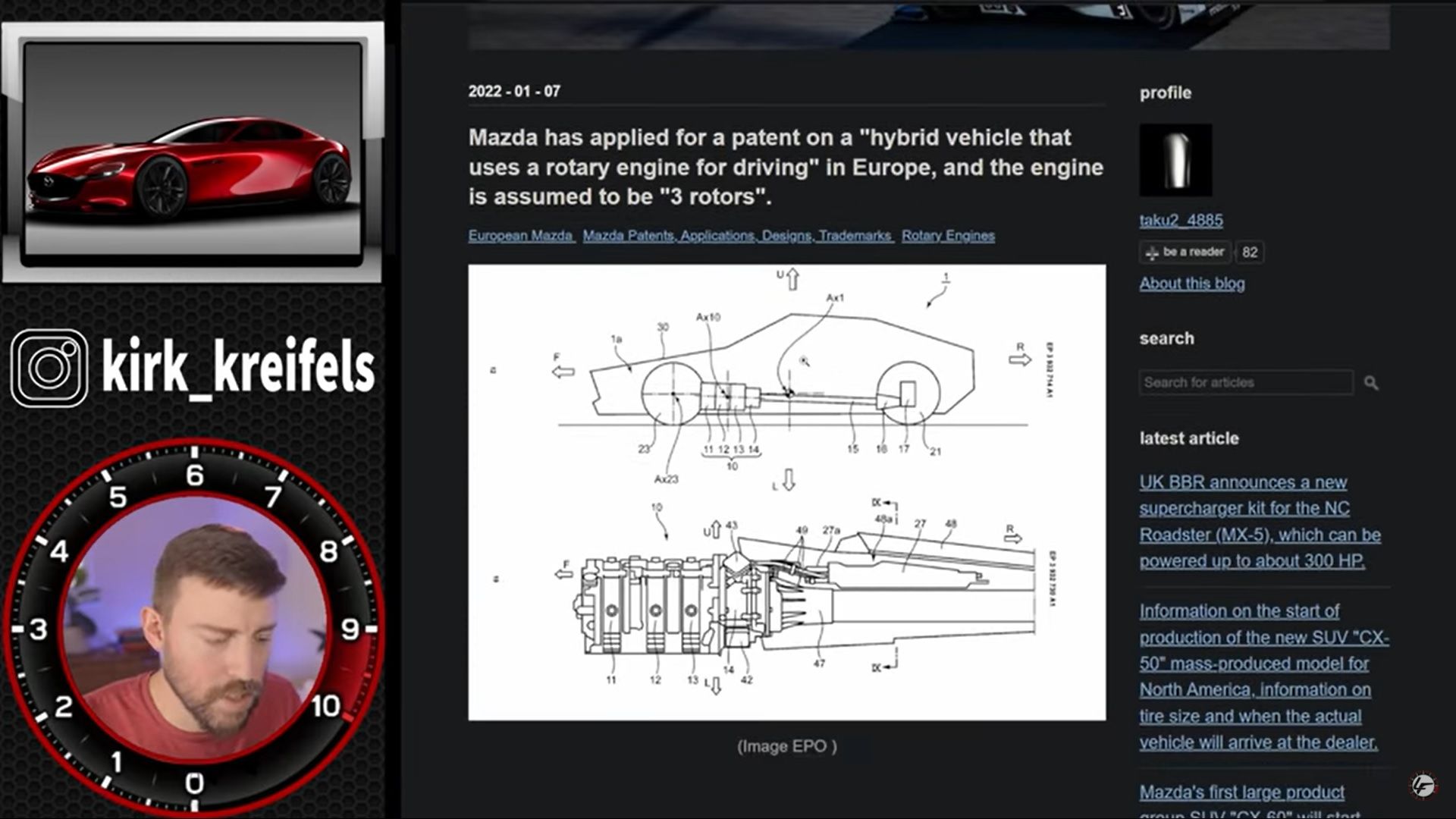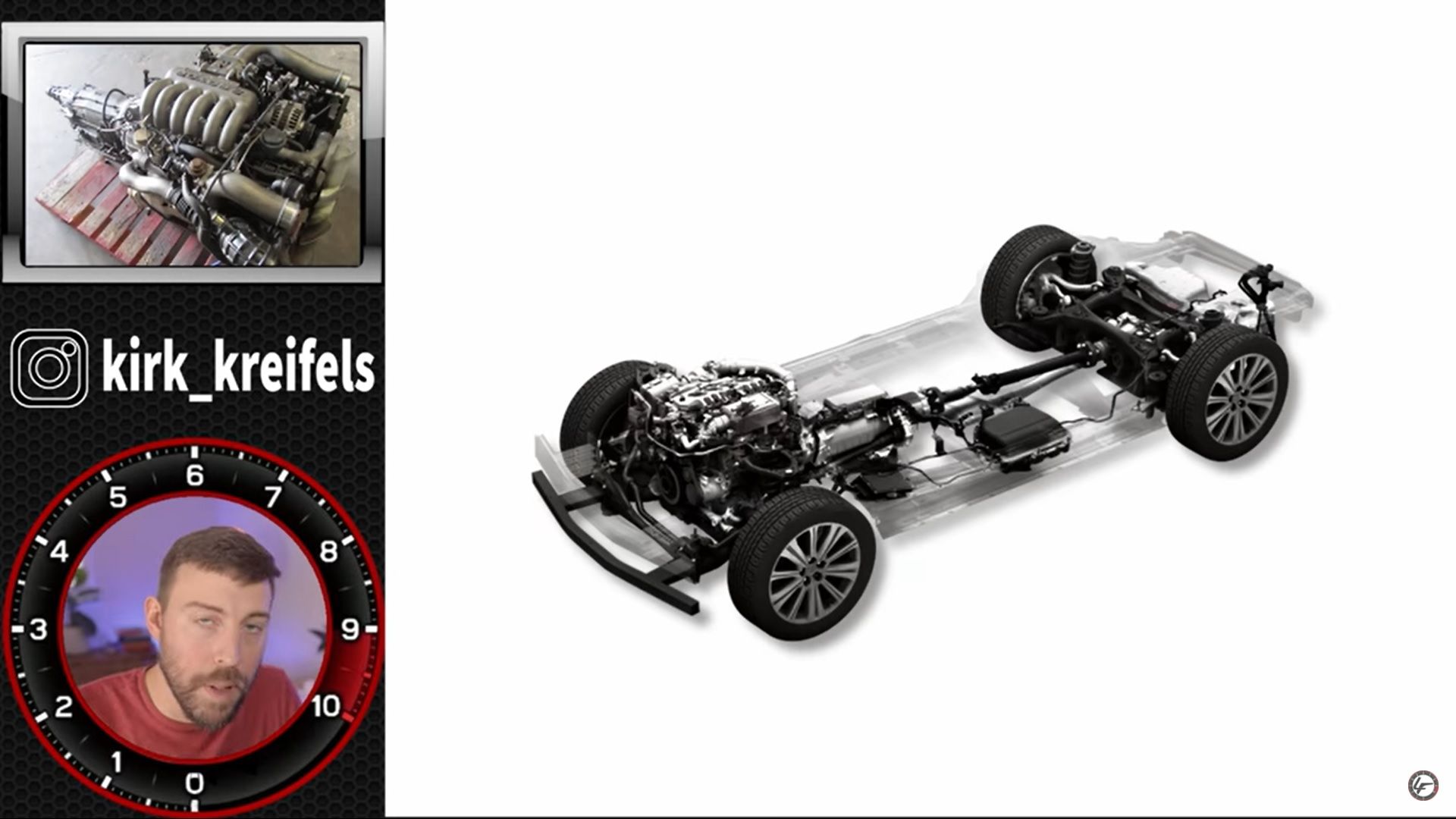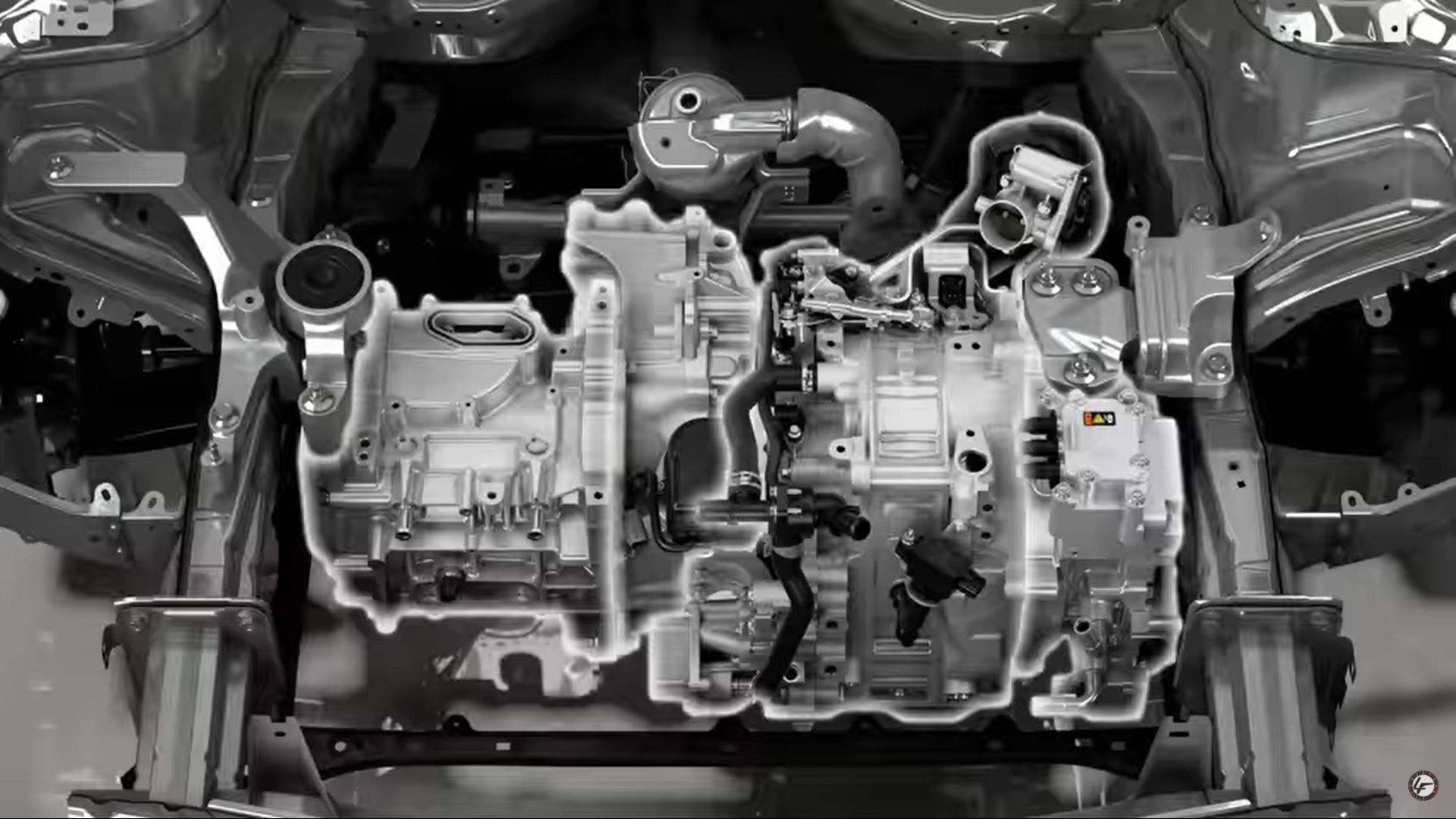Mazda has been hard at work on its next flagship sports car and the latest patents, filed in Europe, suggest that a rotary engine will be in the center of the car’s propulsion. The hypothetical sports car has been in development since, at least, 2015, when the Mazda RX-Vision was unveiled. We know the car is coming, but we don’t know when exactly. What we do know is that Mazda will finally give us a proper successor to the RX-7. Here’s what the latest patents suggest.
The patent images show that Mazda’s future sports car will feature a tri-rotor engine with a 48-volt mild-hybrid system, rear-wheel-drive layout, and a transaxle. Mazda has made single and dual-rotor Wankel engines, but the tri-rotor engine was limited to the Mazda Cosmo JC, which to this day, is the most powerful, road-going rotary engine, Mazda has made.
The main reason for the car’s delay is, of course, making sure that the rotary engine will comply with the latest emissions regulations. With the Euro 7 standard on its way, this may be Mazda’s last chance to revive the rotary engine. While Mazda hasn’t confirmed it yet, the new rotary engine is expected to be turbocharged, for the flagship sports car.
We know the engine will feature direct injection, similar to the SkyAciv X engines, and Mazda has even experimented with a hydrogen-powered rotary engine. That said, none of the patents, filed at the European Patent Office suggest, the new sports car will utilize hydrogen as a fuel.
The YouTube channel, Kirk Kreifels follows a lot of what is happening on the Japanese automotive market and media, and predicts that the tri-rotary engine will displace 2.0 liters and produce around 380 horsepower and 335 pound-feet (454 Nm). He also predicts that the 48-Volt mild-hybrid system would supply an additional 50 horsepower and 150 pound-feet (203 Nm), which sounds a bit too generous.
That said, a combined power output of around 400 to 420 horsepower would put Mazda’s new sports car in the neighborhood of the Nissan Z and Toyota GR Supra, which are expected to be the main competition. It all sounds like an epic rehash of the 1990s Japanese rise, only without the 276-horsepower “Gentlemen’s agreement”.
Given the inherent drawback of the rotary engine, especially with regards to emissions, it was largely believed that Mazda’s next high-performance sports car would utilize the company’s newly-developed, turbocharged inline-six engine. While it was initially announced that a rotary engine would only be used as a range extender, in models like the 2022 MX-30 Plug-in hybrid, the latest patents confirm that Mazda is, indeed, giving the rotary one last chance, in an awesome sports car.




